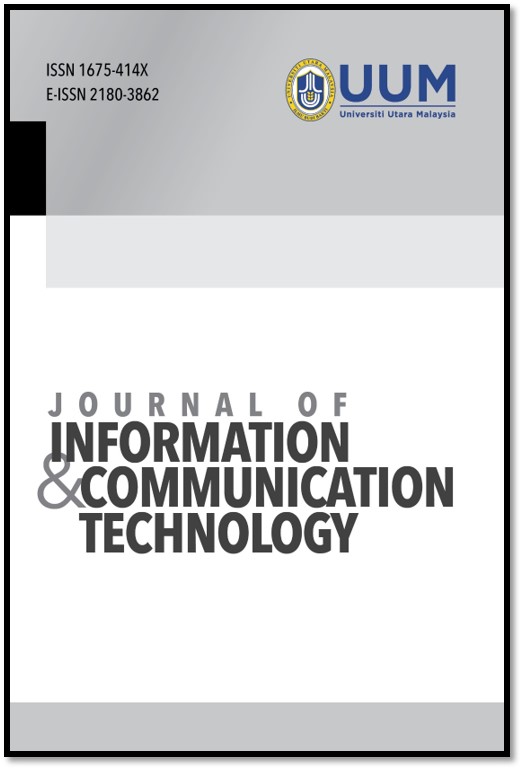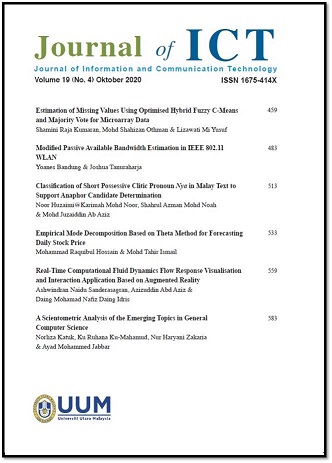Hybrid Neighbourhood Component Analysis with Gradient Tree Boosting for Feature Selection in Forecasting Crime Rate
DOI:
https://doi.org/10.32890/jict2023.22.2.3Keywords:
Feature Selection, Artificial Intelligence, Neighbourhood Component Analysis, Gradient Tree Boosting, Crime ForecastingAbstract
Crime forecasting is beneficial as it provides valuable information to the government and authorities in planning an efficient crime
prevention measure. Most criminology studies found that influence from several factors, such as social, demographic, and economic
factors, significantly affects crime occurrence. Therefore, most criminology experts and researchers study and observe the effect
of factors on criminal activities as it provides relevant insight into possible future crime trends. Based on the literature review, the
applications of proper analysis in identifying significant factors that influence crime are scarce and limited. Therefore, this study proposed a hybrid model that integrates Neighbourhood Component Analysis (NCA) with Gradient Tree Boosting (GTB) in modelling the United States (US) crime rate data. NCA is a feature selection technique used in this study to identify the significant factors influencing crime rate. Once the significant factors were identified, an artificial intelligence technique, i.e., GTB, was implemented in modelling the crime data, where the crime rate value was predicted. The performance of the proposed model was compared with other existing models using quantitative measurement error analysis. Based on the result, the proposed NCA-GTB model outperformed other crime models in predicting the crime rate. As proven by the experimental result, the proposed model produced the smallest quantitative measurement error in the case study.
Metrics
Additional Files
Published
How to Cite
Issue
Section
License
Copyright (c) 2023 Journal of Information and Communication Technology

This work is licensed under a Creative Commons Attribution 4.0 International License.





 2002 - 2020
2002 - 2020


























